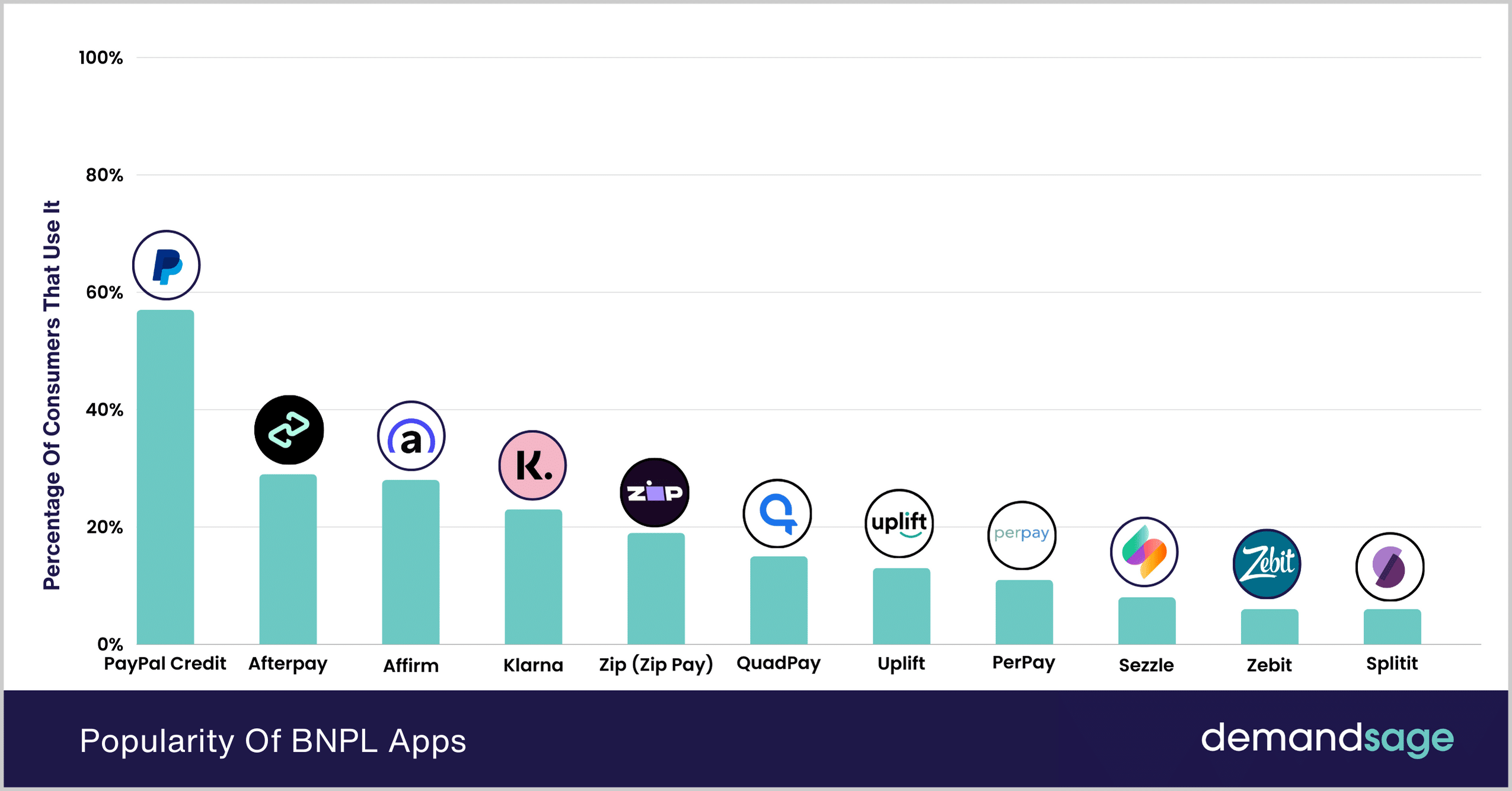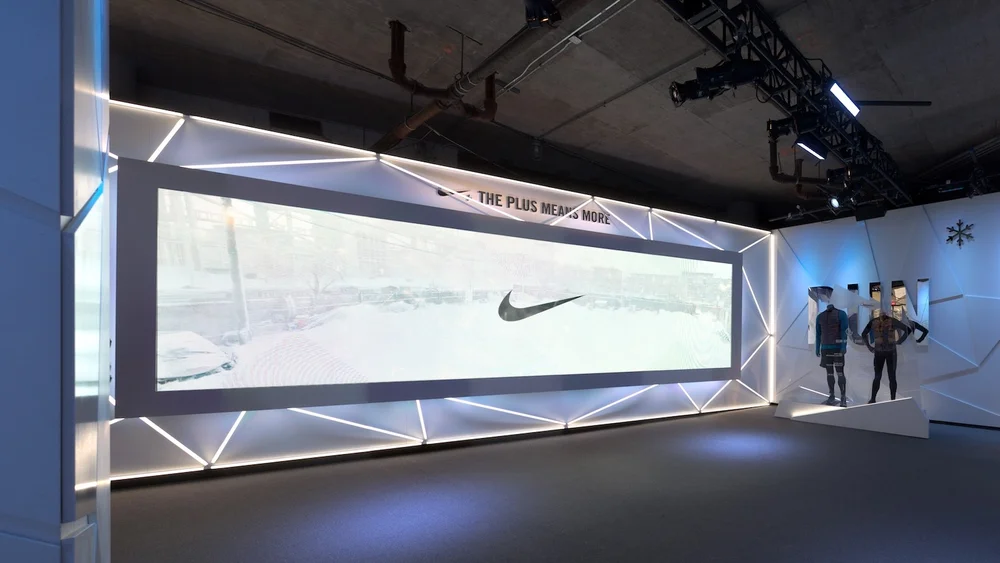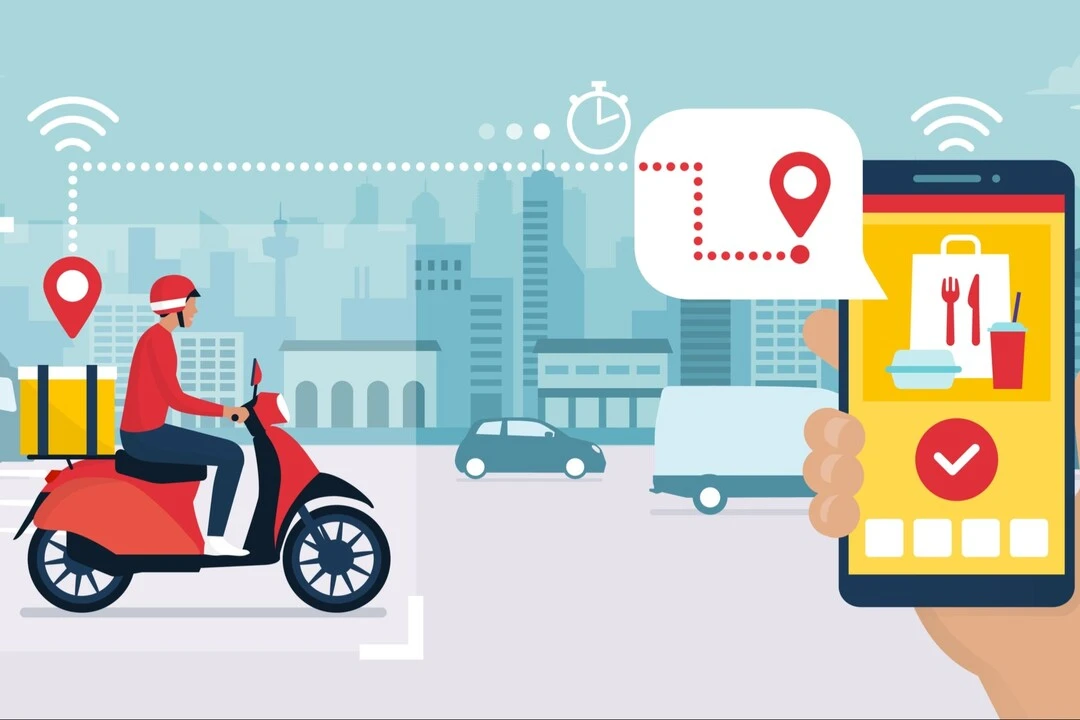22 Important eCommerce Insights for Strategic Growth in 2025

22 Important eCommerce Insights for Strategic Growth in 2025
The digital marketplace has long transcended mere convenience, becoming the primary battleground for consumer attention and loyalty. In 2025, simply having an online store isn't enough; understanding the nuanced shifts in consumer behaviour, technological advancements, and operational demands is paramount for sustained success. This comprehensive guide unveils 22 pivotal eCommerce insights, offering a strategic compass to navigate the complexities and capitalise on the immense opportunities shaping online retail.
I. The Evolving Global Marketplace: Beyond Sheer Scale
1. The Rise of Hyper-Personalised Marketplaces Redefining Niche Discovery
Forget the one-size-fits-all giants dominating the early eCommerce era. In 2025, specialised niche marketplaces are not just growing; they are fundamentally reshaping how consumers discover unique products and experiences. These platforms excel by offering highly curated inventories, often with a strong community focus, specific aesthetic, or shared values (e.g., sustainable goods, handmade crafts, vintage fashion). Unlike traditional broad marketplaces, they prioritise tailored discovery pathways and exclusive vendor relationships, fostering a sense of belonging and reducing information overload for discerning shoppers. For businesses, this means exploring vertical-specific marketplaces for deeper engagement with a pre-qualified audience, leading to higher conversion rates, stronger brand affinity, and less direct price-based competition. It's about finding your tribe, not just a crowd.
2. Cross-Border Commerce: Localised Experience is Non-Negotiable
While the allure of international sales continues its rapid ascent, success in 2025's cross-border eCommerce hinges on more than just accepting foreign currency. The emphasis has shifted decisively towards providing a fully localised experience. This encompasses offering familiar local payment methods (e.g., Klarna in Europe, WeChat Pay in Asia, local bank transfers), translating content into native languages with cultural nuance (not just literal translation), providing localised customer support hours accessible to different time zones, and, critically, ensuring transparent and hassle-free local returns processes. Businesses that invest in this granular localisation are seeing significant uplifts in trust, reduced cart abandonment in new international markets, and stronger brand loyalty, effectively outmanoeuvring less adaptable global competitors.

3. The Maturation of Direct-to-Consumer (DTC) Brands: Profitability Over Pure Growth
The initial DTC boom focused heavily on rapid customer acquisition at almost any cost, often fueled by venture capital. In 2025, the narrative has fundamentally shifted towards sustainable profitability and long-term viability. DTC brands are meticulously optimising every stage of their supply chains, from ethical sourcing and manufacturing efficiencies to streamlined last-mile delivery. The renewed focus is on enhancing Customer Lifetime Value (CLV) through sophisticated loyalty programs, building exclusive brand communities, and implementing innovative subscription models tailored to repeat purchases. Many are strategically blending their robust online presence with experiential pop-up or flagship physical stores, leveraging brick-and-mortar as a touchpoint for brand immersion, personalised consultations, and community engagement, rather than solely as a high-volume sales channel. This evolution signals a more mature, resilient, and integrated DTC landscape.

4. Sustainability as a Core Business Driver and Non-Negotiable Consumer Expectation
Environmental and social responsibility have moved far beyond buzzwords; they are now deeply ingrained consumer expectations and critical business differentiators. By 2025, a significant majority of consumers, particularly Gen Z and younger Millennials, will actively seek out and prioritise brands that transparently share their sustainability efforts, from ethical supply chain practices and eco-friendly packaging to carbon-neutral shipping initiatives.
Nearly half are willing to actively cease supporting brands with documented ethical or environmental concerns, even if it means higher prices. This necessitates brands to genuinely integrate circular economy models (repair programs, recycling initiatives, product take-back schemes for reuse or resale) and communicate their environmental impact effectively and verifiably to gain a significant competitive advantage and foster profound, lasting customer loyalty. "Greenwashing" will be met with severe consumer backlash.

5. Subscription Economy's Broadening Horizons: Beyond the Box
The subscription model's evolution in 2025 extends far beyond traditional recurring physical goods (like meal kits or beauty boxes). It's expanding into highly personalised digital experiences (e.g., curated content platforms, virtual fitness classes, software-as-a-service for consumers), exclusive access to unique inventory or limited edition drops, and even luxury items offered on a rotational or tiered basis.
For businesses, this signifies an unprecedented opportunity to re-evaluate how subscription elements can unlock predictable recurring revenue streams, deepen customer engagement through continuous value delivery, and transform one-time buyers into long-term loyalists. The key is to offer perceived value that consistently exceeds the recurring cost, focusing on convenience, curation, and the creation of a loyal community around the subscription.
II. The Empowered Consumer: Shifting Expectations & New Habits
6. The Visual-First Buying Journey: Immersive Experience as Standard
In 2025, a static product image on an eCommerce site feels increasingly archaic and insufficient. Consumers expect to virtually interact with and experience products before purchase, bridging the gap between online browsing and physical interaction. This means high-resolution imagery, interactive 3D models that allow for 360-degree views and detailed zooms, Augmented Reality (AR) try-on features (for apparel, makeup, furniture placement within their own homes), and compelling product videos are no longer optional extras; they are fundamental components of the digital shopping experience. Brands investing heavily in rich, immersive media content are seeing significant boosts in conversion rates, notable reductions in product returns (as customer expectations are better managed), and increased engagement time on product pages.
7. Voice Commerce: From Novelty to Conversational Necessity
As smart speaker and voice assistant adoption becomes ubiquitous in homes and on mobile devices, voice search is rapidly evolving from a niche novelty into a critical pathway for product discovery, reorders, and quick, low-consideration purchases. By 2025, optimising product descriptions, FAQs, and content for natural language queries and conversational interfaces will be a strategic imperative. This enables seamless, hands-free shopping experiences, allowing consumers to simply speak their needs.
Businesses must consider how their product information can be verbally consumed and how their checkout flow can adapt to voice commands, anticipating a future where a significant portion of quick reorders are initiated through voice assistants, streamlining the purchase process.
8. The 'Quick Commerce' (Q-Commerce) Revolution Demands Hyper-Local Speed
For everyday essentials, impulse buys, and even last-minute gifts, consumer patience is dwindling rapidly. The 'quick commerce' (Q-Commerce) phenomenon, promising near-instant delivery (within 10-60 minutes), is no longer confined to major cities; it's expanding its reach. This intense pressure on speed is forcing traditional eCommerce players to rethink their fulfilment strategies, necessitating strategic partnerships with rapid delivery services, the development of in-house micro-fulfilment networks, or significant investments in urban micro-warehousing and dark stores. Businesses failing to offer accelerated delivery options for suitable product categories risk losing a substantial segment of last-minute, convenience-driven purchases to Q-Commerce specialists.
9. Privacy as a Value Proposition and Trust Multiplier
In a post-cookie world with ever-evolving and increasingly stringent data regulations (like GDPR, CCPA, and emerging global counterparts), consumer awareness and concern about data privacy have never been higher. By 2025, brands that go beyond mere compliance to genuinely prioritise data privacy, offer transparent control over personal information (e.g., easy access to data settings, clear consent mechanisms), and clearly articulate their data usage policies will build significant, lasting trust.
Ethical data practices are transforming into a powerful competitive differentiator and a fundamental cornerstone of long-term brand loyalty. Consumers are increasingly willing to share valuable first-party data with brands they trust, provided the value exchange is clear and their privacy rights are unequivocally respected.

10. Community-Driven Commerce and the Power of Niche Influencers
Traditional, broad-reach advertising is increasingly giving way to more authentic, community-driven influence. Consumers are now more swayed by recommendations from trusted online communities, niche forums, fan groups, and authentic micro-influencers who share their values, interests, and aesthetics, rather than celebrity endorsements. Building and nurturing vibrant brand communities, fostering genuine user-generated content (UGC) campaigns, and collaborating with authentic voices who resonate deeply with specific market segments will be crucial to driving organic discovery, fostering profound loyalty, and boosting sales. This strategy moves beyond transactional relationships to cultivate genuine brand advocacy and collective identity.
11. The Rise of the Values-Aligned Consumer: Purpose-Driven Purchasing
Beyond just product quality and price, consumers are now actively aligning their purchasing power with brands that explicitly reflect their social, ethical, and environmental values. Transparency in labour practices, commitment to diversity and inclusion initiatives, fair trade certifications, and active community engagement are becoming as important as product features. Brands that genuinely embed these values into their core operations, not just their marketing, and communicate them authentically will attract and retain a growing segment of highly engaged, ethically-minded shoppers. Conversely, any perceived "woke-washing" or misalignment with stated values can lead to rapid and severe consumer backlash.
12. AI-Powered Hyper-Personalisation: Anticipating Every Need
Personalisation in 2025 extends far beyond simple "you might also like" recommendations. Advanced AI, leveraging vast datasets of browsing history, purchase behaviour, real-time contextual signals (like location, weather, and current events), and even emotional sentiment analysis, enables hyper-personalisation across the entire customer journey. This means dynamically customised product pages, individually adjusted pricing offers, precisely tailored marketing messages across all channels, and proactive customer support that anticipates needs before they are even voiced. Generic, one-size-fits-all experiences will increasingly lead to immediate abandonment and customer dissatisfaction, as consumers expect a bespoke, intuitive interaction that understands their individual preferences and context.
III. Technological Frontiers: AI, Automation & Architecture
13. Generative AI: Revolutionising Content Creation and Product Discovery
Generative AI is rapidly transforming the operational and customer-facing landscape of eCommerce. Beyond simple chatbots, AI is now capable of creating highly realistic product images and videos from text prompts, generating dynamic and personalised product descriptions at scale, and even assisting in new product design and trend forecasting. This not only dramatically reduces the time and cost associated with content creation but also allows for hyper-tailored marketing campaigns that adapt to individual consumer preferences in real-time. Furthermore, sophisticated AI-powered intelligent search functionalities are making product discovery more intuitive and efficient, guiding customers to relevant items with unprecedented precision, fundamentally enhancing the overall user experience.
14. Headless Commerce Gains Mainstream Momentum for Unrivalled Agility
The strategic decoupling of the front-end (what the customer sees and interacts with) from the back-end (the underlying eCommerce platform, inventory, and order management) in a headless architecture is no longer a bleeding-edge concept; it's gaining mainstream adoption among growing and enterprise-level brands. This modular approach offers unprecedented flexibility, speed, and customisation, allowing brands to deliver seamless, highly tailored digital experiences across any device or channel (web, mobile app, IoT devices, smart displays) without being restricted by traditional monolithic platform templates.
Brands opting for headless solutions can innovate faster, integrate powerful best-of-breed third-party tools more easily, and maintain full creative control over their user interfaces, leading to superior customer experiences, better SEO performance, and reduced long-term development costs for future-proofing.
15. Conversational AI for Enhanced Customer Service and Proactive Sales
AI chatbots and virtual assistants are evolving beyond basic FAQ responses to become sophisticated, indispensable tools for customer engagement and sales acceleration. In 2025, advanced conversational AI is handling complex customer queries, guiding purchasing decisions through personalised recommendations, and providing highly empathetic and efficient 24/7 support. These AI-powered agents can analyse natural language and emotional context, offering human-like interactions that significantly improve customer satisfaction, resolve issues faster, and accelerate the sales cycle (some studies indicate up to 4x higher conversion rates for AI-assisted purchases). This strategic deployment frees human agents to focus on more complex, empathetic problem-solving and relationship building.

16. Automation in Inventory & Fulfilment: The Precision Edge
AI and advanced automation are becoming critical for optimising every facet of the supply chain, from inventory management and demand forecasting to warehouse operations and last-mile logistics. Real-time stock level tracking, predictive analytics for automated reordering, robot-assisted picking and packing in fulfilment centres, and drone/robot delivery trials are becoming standard practices, especially for quick commerce and multi-channel retailers. This dramatically reduces costly stockouts, minimises wasteful overstocking, lowers operational errors, and significantly speeds up delivery times, directly impacting customer satisfaction and overall profitability. Businesses failing to automate these core processes will struggle to compete on efficiency, cost, and speed of delivery.
17. Blockchain for Transparency, Authenticity & Unwavering Trust
While still evolving in its practical applications, blockchain technology is poised for increased adoption in eCommerce, particularly for high-value goods, luxury items, and products with complex global supply chains where authenticity, ethical sourcing, and provenance are paramount. Blockchain provides an immutable, transparent, and verifiable record of a product's entire journey from raw material to consumer, allowing for unparalleled traceability. This not only effectively combats counterfeiting but also builds unprecedented consumer trust by providing verifiable claims of origin, fair trade practices, and sustainable production methods. Brands leveraging blockchain will increasingly differentiate themselves through verifiable, unassailable transparency, appealing directly to the conscious consumer.
IV. The Human Element: Connection & Experience
18. The Art of Live Commerce Engagement: Beyond the Screen
Live commerce is transforming online shopping into an immersive, interactive, and highly engaging experience. Beyond simple live streams, these events feature dynamic product demonstrations, real-time Q&A sessions with brand experts or founders, exclusive flash sales with limited-time offers, and even interactive polls, fostering a powerful sense of urgency and community. Brands are leveraging charismatic hosts and real-time interaction to create entertaining shopping events that significantly boost impulse purchases and immediate conversions. It's a powerful blend of entertainment and retail, effectively bridging the gap between digital convenience and the personalised, engaging experience of in-store shopping, particularly impactful for fashion, beauty, and home goods.
19. Post-Purchase Engagement is the New Frontier for Retention
The customer journey no longer ends at checkout; in 2025, it truly begins there. Personalised and proactive post-purchase communications are vital for building lasting customer relationships, fostering brand loyalty, and driving repeat purchases. This includes intelligent, AI-driven order updates, personalised care instructions for products, exclusive early access to loyalty programs, and proactive customer support anticipating potential issues. Brands are using data and AI to anticipate post-purchase needs and deliver tailored content that deepens loyalty, fosters positive reviews, and transforms satisfied customers into powerful brand advocates, significantly improving customer lifetime value and reducing churn.
20. Seamless Omnichannel Returns Experience: A Loyalty Driver
Easy, efficient, and transparent returns processes are as critical to customer satisfaction and loyalty as a smooth purchasing journey. In 2025, consumers expect multiple convenient return options (in-store drop-off, pre-paid mail labels, locker drop-off points, scheduled home pickups) and rapid, hassle-free refunds. Brands that streamline their returns process, making it frictionless and transparent, are seeing increased customer confidence and a significantly higher propensity for future purchases. Conversely, a poor or complicated returns experience can lead to immediate brand abandonment and negative word-of-mouth, regardless of initial product satisfaction.
21. Employee Experience Directly Impacts Customer Experience & Brand Loyalty
In 2025, the internal operations of an eCommerce business are inextricably linked to external customer perception. Highly engaged, well-trained, and empowered eCommerce teams, supported by robust internal tools (e.g., unified CRM systems, AI-powered knowledge bases for rapid answers) and clear communication channels, directly translate to superior customer service and a more cohesive, authentic brand experience. Investing in employee enablement, continuous training, and fostering a positive internal culture is not just an HR initiative; it is a direct investment in customer satisfaction, reduced churn, stronger brand loyalty, and ultimately, sustained business growth.
22. The Phygital Imperative: Blurring the Lines Between Online and Offline
The distinction between physical and digital shopping experiences is rapidly dissolving. In 2025, "phygital" retail experiences are becoming the norm, where online interactions seamlessly drive offline engagement, and vice versa. This means physical stores are evolving into experience hubs, showrooms for online inventory, or efficient click-and-collect points. Technologies like QR codes linking to product videos, in-store AR experiences (e.g., virtual try-ons), digital kiosks with extended online catalogues, and personalised mobile notifications within a store are enhancing the physical shopping journey. For eCommerce businesses, this means strategising how digital channels can funnel traffic to physical locations (drive-to-store campaigns) and how physical spaces can gather data and enhance the online customer profile, creating a truly unified and enriched brand experience across all touchpoints.
Conclusion: Charting Your Course in the eCommerce Evolution
The eCommerce landscape of 2025 is rich with complexity and unparalleled opportunity, driven by accelerating technological shifts and ever-evolving consumer expectations. From the imperative of hyper-personalisation and sustainable practices to the strategic advantages of AI-driven operations and the seamless integration of online and offline experiences, understanding these 22 pivotal insights is fundamental for any business seeking to not just participate, but to lead.
By embracing these forward-looking trends, fostering seamless and engaging experiences across all touchpoints, and continually adapting to the informed, empowered consumer, your eCommerce venture can transform challenges into unparalleled growth and solidify its position at the forefront of the digital economy.
Need to Turn These Insights into Actionable Growth?
Reading about these 22 insights is a powerful first step, but transforming them into a tangible, high-performing eCommerce strategy can be a complex and demanding challenge. In 2025, the competitive landscape requires more than just knowing the trends - it requires the expertise to implement them.
Our team at Appear Online specialises in exactly this. We are a leading eCommerce SEO agency dedicated to helping businesses like yours navigate the complexities of search, technology, and consumer behavior to drive sustainable growth. We can help you:
- Dominate Organic Search: Implement the technical SEO, content strategies, and authority-building tactics required to ensure your products and brand are found by qualified customers.
- Optimise for Mobile & Conversions: Create a seamless mobile user experience and a conversion-focused booking funnel that turns browsers into buyers.
- Build a Future-Proof Strategy: Leverage data, AI, and emerging trends to craft a long-term strategy that keeps you ahead of the curve.
Don't let these insights become missed opportunities. Partner with an expert team that can turn your eCommerce ambitions into a reality.
Want to learn how we can help your online store thrive in 2025? Get in touch with us for a free consultation today.
References:
https://aws.amazon.com/what-is/sentiment-analysis/
https://commercetools.com/blog/live-commerce-engagement-best-practices
https://councils.forbes.com/blog/the-power-of-micro-influencers
https://www.drapersonline.com/news/represent-readies-london-flagship
https://www.eaccountable.com/blog/why-ecommerce-subscription-model-is-reshaping-dtc-growth-in-2025
https://www.emarketer.com/learningcenter/guides/blockchain-technology-applications-use-cases/
https://www.fairatmos.com/blog/5-giant-companies-that-are-going-carbon-neutral/
https://www.firstinsight.com/white-papers-posts/gen-z-shoppers-demand-sustainability
https://www.forbes.com/lists/canada-employers-culture/
https://www.gov.uk/data-protection
https://www.investopedia.com/terms/c/churnrate.asp
https://www.investopedia.com/terms/v/verticalmarket.asp
https://www.ionos.co.uk/digitalguide/websites/digital-law/california-consumer-privacy-act-ccpa/
https://manufacturingdigital.com/top10/top-10-companies-using-blockchain
http://marketingevolution.com/knowledge-center/is-broad-reach-the-key-to-marketing-roi-part-1
https://www.openloyalty.io/resources/loyalty-program-trends
https://www.paddle.com/resources/dtc-trends-statistics
https://www.pcmag.com/picks/the-best-ai-chatbots
https://productscope.ai/blog/ai-generated-product-images/
https://www.qrcodechimp.com/qr-code-statistics/
https://www.shopify.com/blog/brand-affinity
https://www.statista.com/statistics/1274787/bnpl-app-downloads-in-europe/
https://www.statista.com/topics/9085/wechat/
https://straitsresearch.com/statistic/fastest-growing-quick-commerce-markets
https://www.theconciergeclub.com/blog/experiential-marketing-trends
https://thesustainableagency.com/blog/greenwashing-examples/
https://usercentrics.com/guides/data-privacy/data-privacy-statistics/
.avif)

.webp)






